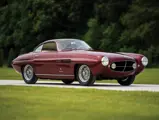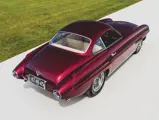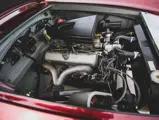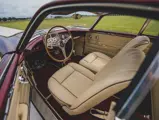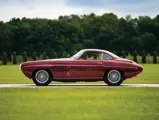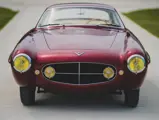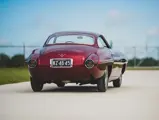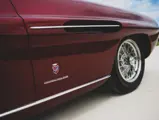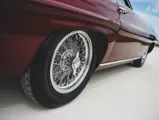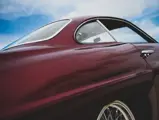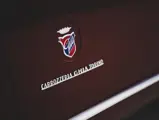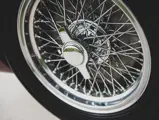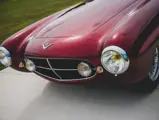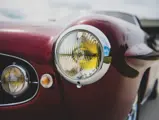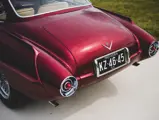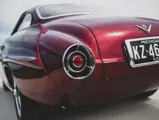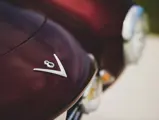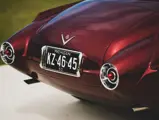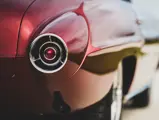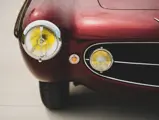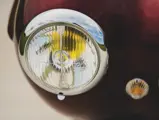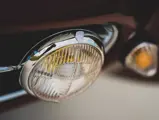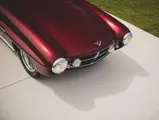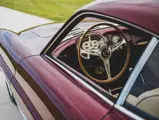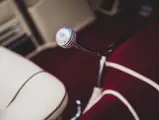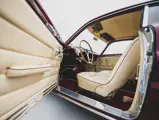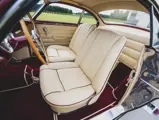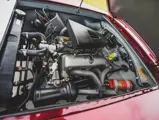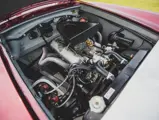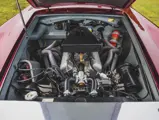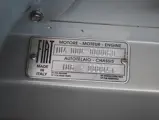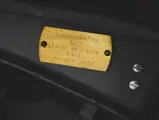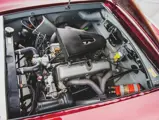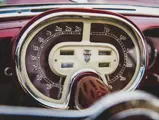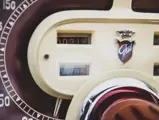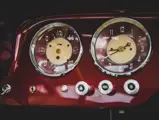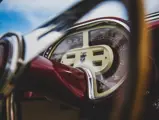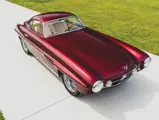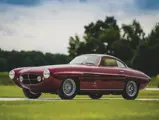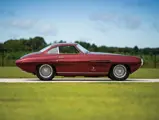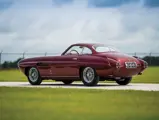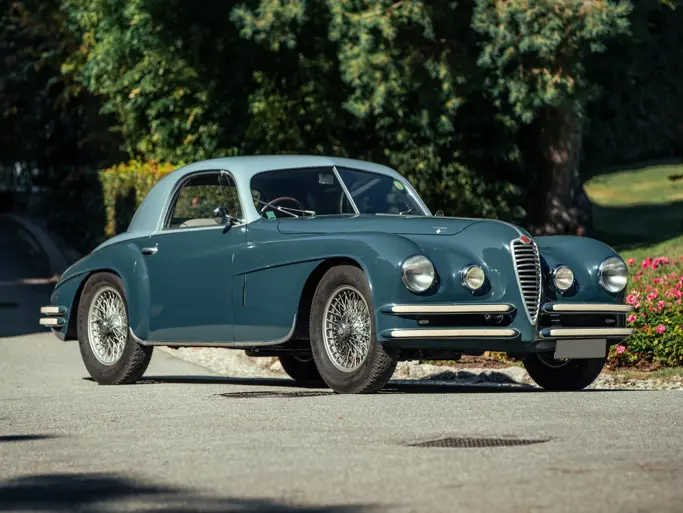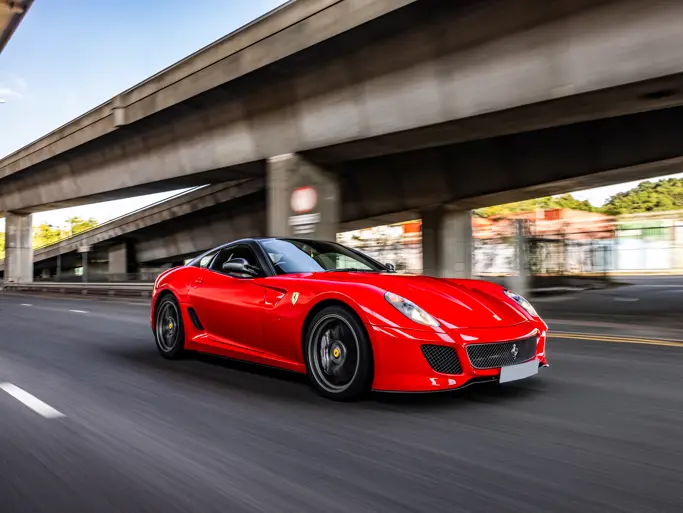The Elkhart Collection
1953 Fiat 8V Supersonic by Ghia
{{lr.item.text}}
$2,040,000 USD | Sold
 | Elkhart, Indiana
| Elkhart, Indiana
{{internetCurrentBid}}
{{internetTimeLeft}}

- Originally delivered to famed General Motors designer Henry S. Lauve
- One of only 15 Ghia Supersonics on the 8V chassis
- Beautiful and well-maintained older restoration
- A landmark in Jet Age automotive design
“THE BIGGEST SURPRISE OF THE YEAR”
Fiat’s most legendary, significant, and storied production model, the 8V, was aptly described by Road & Track in 1952 as being “the biggest surprise of the year.” Although Fiat traces its roots to 1899 and built competition cars both massive and magnificent in the early twentieth century, after World War II the company was known largely for its mass-produced automobiles for the common man, such cars like the tiny “Topolino” that put a nation on wheels and had become among the most popular in Europe.
Therefore, it came as a shock to the automotive world when Fiat suddenly introduced a powerful sports car with an advanced overhead-valve light alloy V-8 engine, Siata-fabricated chassis, and four-wheel independent suspension, which could be and was successfully raced by privateers all over the world.
Like most sophisticated chassis of the time, the 8V lent itself handsomely to custom coachwork, which Fiat encouraged. Carrozzeria Ghia of Torino accounted for approximately 30 to 40 of the 114 8V chassis built, of which the most striking were the 15 bodied to Giovanni Savonuzzi’s stunning Jet Age design, known, simply and appropriately as the “Supersonic.”
The Supersonic design had originally been proposed for an Alfa Romeo racing car, which Savonuzzi gave a steeply raked, long windshield; a curved nose that formed a straight-through beltline, ending at small tail fins flaring off lights intended to resemble jet afterburners; and a low, glassy greenhouse.
Similar styling on an 8V chassis was subsequently ordered by American designer Paul Farago, and 14 more examples followed, all of which had detail differences but remained largely true to Savonuzzi’s original and dramatic design. They are considered the most sought-after and desirable 8Vs, as they boast the best combination of avant-garde design from the Jet Age. Even today they are stunningly modern and dramatic and turn heads wherever they go. Few cars are so capable of stopping concours crowds in their tracks.
THE LAUVE SUPERSONIC
General Motors designer Henry de Segur Lauve, a concept artist behind the original Corvette prototype and other significant cars, attended the Supersonic design’s official debut at the 1953 Paris Auto Show. Mr. Lauve was struck by the styling of the new model and placed an order for his own, which, finished in white with a blue interior, was shipped from the Genoa docks aboard SS Constitution. Typical of the 8Vs, the car featured exquisite hardware throughout, including the interior with an elaborate Ghia-badged speedometer behind the wood-rimmed steering wheel.
Mr. Lauve contacted Fiat roughly a year later, complaining about difficulties with the engine of his car in everyday use. He received a rather amusing response from the Italian automaker, reproduced in Tony Adriaensens’s book Otto Vu, noting their surprise that he had tried to use the car as a “daily driver,” as it was intended for use by wealthy amateur racing drivers!
Nonetheless, Fiat agreed to supply a new engine, no. 000188, and its ancillary components, on the condition that Mr. Lauve return the original engine, no. 000039. Interestingly, that engine was never returned to Fiat and was subsequently fitted to another 8V Supersonic. At some point before the new engine was installed, Mr. Lauve ran the car with a Chevrolet 283 V-8 under the hood, as remembered by his fellow GM designer Robert Cumberford, who enjoyed many memorable high-speed rides in it through the Detroit suburbs. During this time, the treatment of the car’s flanks was appropriated for the new 1958 Chevrolet, reflecting the attention paid by Mr. Lauve and his fellow designers.
Apparently the 8V Supersonic, with whatever power plant, pleased Mr. Lauve, as he and his family maintained it faithfully longer than almost any other original 8V owner. During their tenure it was refinished in silver, as featured in Otto Vu. It was finally sold by the Lauves in 1991 and was later owned in 1994 by Eric Nielsen of California. The car was subsequently restored in this rich garnet-over-tan combination, with a correct 8V engine, no. 000060, tucked under the hood. The work was beautifully detailed, with the color showing off the elaborate curves of the body and fabulous touches such as smoked glass sun visors and Borrani chrome wire wheels.
Following long-term ownership in a prominent Swiss collection, the car was acquired for the current collection and has remained well maintained since, alongside two other superlative 8Vs. It would certainly be suitable for either enjoying on vintage rallies, such as the California Mille, Colorado Grand, or even the Mille Miglia, but could also be lightly freshened for happy exhibition at further shows and concours.
Few Supersonics have such a well-known, colorful, and fascinating history as the Henry Lauve car—preserved and maintained by a legendary Detroit designer, a man who appreciated the exquisite and advanced styling when he saw it. It is among the greatest treasures of this collection.

